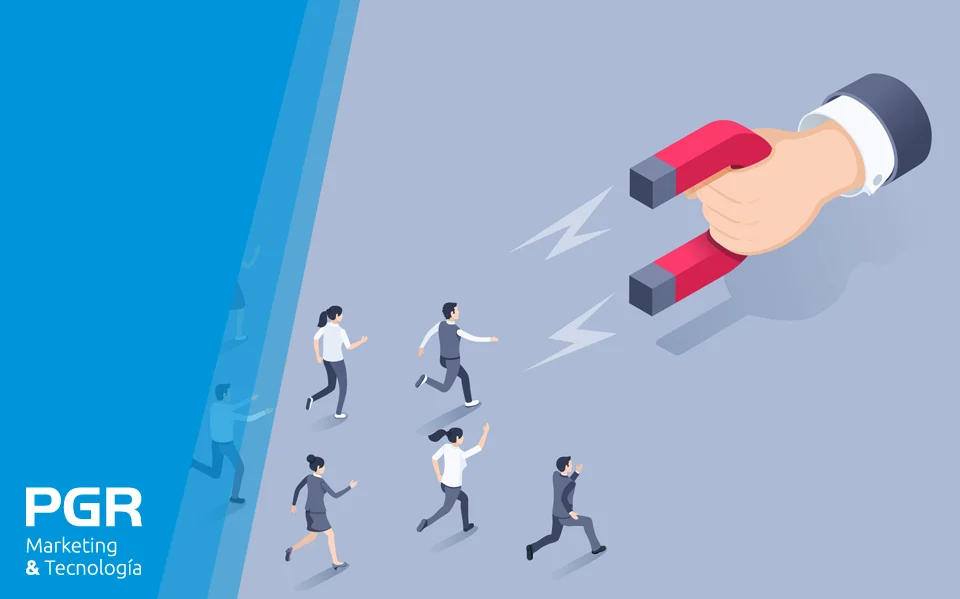In this post we tell you what Inbound Marketing is, how it works and why it is a very effective tool for B2B businesses.
Inbound Marketing is a methodology that allows your potential customers to find your brand, products, or services more easily on the internet, knowing your offer through valuable content specially oriented to their needs and appropriate to the moment in which they are on their journey Shopping.
Inbound Marketing implements different techniques so that the prospect finds your brand, product or service, according to what they are looking for or requiring at a certain moment on their way to making a decision.
Unlike Outbound Marketing, Inbound is a non-invasive practice, in which actions such as content marketing, SEO, SEM, email marketing and social media are used, all of them working in combination and synchronization with the help of advanced automation tools. Marketing and web analytics.
The Inbound methodology is an approach that seeks to gradually build relationships with prospects and customers, with the ultimate goal of growing your business. This is basically achieved by providing them with valuable information that allows them to solve their needs in each one of the stages of the trip they make accompanied by your company, thus achieving their objectives, confident that they have made the right decision.
The stages in the application of the Inbound methodology
The Inbound methodology considers four important stages, always based on the prospects' purchase cycle: attract, convert, close, and delight.
In each one of them you work according to the stage of the purchase cycle of your prospects (discovery, consideration, decision). In addition to these purchase stages, a fourth stage is taken into account that considers after-sales and loyalty.
We explain it to you:
-
Attract:
In this initial stage, the aim is to capture the attention of the right people with valuable content and conversations that strengthen your position as a reference and expert in a topic of interest to them.
-
Convert:
It aims to offer contacts information and solutions geared towards their needs and objectives. In this way, you position yourself as a trusted connoisseur and increase the chances that they will buy your products and services, convinced that they are not making a mistake.
-
Close:
At this closing stage, you should focus on getting the sale. To achieve this, it is necessary to ensure that the Marketing and Sales teams work together, in a coordinated manner, with clear and common objectives. In this way, the sales team can better understand the needs and interests of the potential client and maximize B2B sales results.
-
Delight:
This stage is the loyalty stage, in which you provide help and tools to customers to allow them to achieve success thanks to their purchase and their trust. The relationship with customers does not end with the purchase, but, from that moment on, work on retention to gradually convert them into promoters of your company.
At PGR, we consider Inbound Marketing as a mainly commercial methodology that aims to generate leads and subsequent conversion into customers, through the construction of connections based on the creation of valuable content and tailored experiences.
While Outbound Marketing (traditional marketing method) breaks directly into people's daily lives, presenting the public with product offers that they are not always needing or wanting at the moment, Inbound Marketing builds useful connections for the customer in solving their real problems to achieve their goals.
If you want to know more about how Inbound Marketing can help you and how it fits into your company's strategies, consult our experts without obligation.





